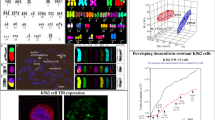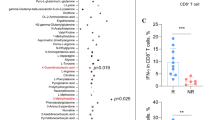Abstract
T-cell acute lymphoblastic leukemia (T-ALL) is a type of acute lymphoblastic leukemia from early T-cell progenitors. Interest grows in creating less toxic agents and therapies for chemo-resistant T-ALL cancer. Recently, elemental boron has special properties useful in the creation of new drugs. Studies have revealed the cytotoxic properties of boric acid (BA) on cancer, but not fully understood. We aimed to investigate the effect of BA on cell proliferation, apoptosis, and oxidative stress in the Jurkat cells. The effects of BA on cell viability were determined by 2,3-bis-(2-methoxy-4-nitro-5-sulfophenyl)-2H-tetrazolium-5-carboxanilide (XTT) assay for 24–48–72 h. The impact of BA on apoptosis was analyzed by acridine orange/ethidium bromide. Expression of apoptosis regulatory genes (Bcl-2, Bax, Caspase-3-8-9) and apoptotic miRNA (miR-21) was used by real-time quantitative polymerase chain reaction (RT-qPCR). The total oxidant status (TOS), total antioxidant status (TAS), and the oxidative stress index (OSI) value were calculated for oxidative stress. We determined the cytotoxic activity of BA on Jurkat cells by using XTT and defined the IC50 concentration (802.7 μg/mL) of BA. The findings clearly show that BA inhibited Jurkat cell proliferation dose-dependently. BA induced apoptosis through downregulated anti-apoptotic genes, and upregulated pro-apoptotic genes. Additionally, we found that BA significantly reduced the expression of miR-21 (p<0.001). Our findings demonstrated that different doses of BA increased TAS levels while decreasing TOS levels in Jurkat cells. Our study suggests that BA might be potential anti-cancer agent candidate in ALL via inhibition of cell proliferation, induced apoptosis, and reducing the amounts of anti-oxidants in cells.




Similar content being viewed by others
References
Terwilliger T, Abdul-Hay M (2017) Acute lymphoblastic leukemia: a comprehensive review and 2017 update. Blood Cancer J 7(6):e577. https://doi.org/10.1038/bcj.2017.53
Huang HP, Liu WJ, Guo QL, Bai YQ (2016) Effect of silencing HOXA5 gene expression using RNA interference on cell cycle and apoptosis in Jurkat cells. Int J Mol Med 37(3):669–678. https://doi.org/10.3892/ijmm.2016.2480
Follini E, Marchesini M, Roti G (2019) Strategies to overcome resistance mechanisms in T-cell acute lymphoblastic leukemia. Int J Mol Sci 20(12):3021. https://doi.org/10.3390/ijms20123021
Makki HJ, Chandrasekharaiah K (2023) Synthesis and characterization of citrus limonum copper nanoparticles and its in vitro evaluation of cytotoxicity against jurkat cells. Pharmacogn Mag 19(3):499–508. https://doi.org/10.1177/09731296231177492
Dong C, Zhang NJ, Zhang LJ (2021) Oxidative stress in leukemia and antioxidant treatment. Chin Med J (Engl) 134(16):1897–1907. https://doi.org/10.1097/CM9.0000000000001628
Sheykhhasan M, Manoochehri H, Dama P (2022) Use of CAR T-cell for acute lymphoblastic leukemia (ALL) treatment: a review study. Cancer Gene Ther 29(8-9):1080–1096. https://doi.org/10.1038/s41417-021-00418-1
Tureyen A, Gunay S, Erden Y, Ince S (2021) Effect of boric acid in colorectal adenocarcinoma cell line and role on chemotherapeutic effect of 5-fluorouracil. Int J Pharm 17:57–64. https://doi.org/10.3923/ijp.2021.57.64
Bülter MB, Köse DA (2023) Boron citrate esters as boron daily food supplementing agents. Synthesis and structural characterizations. J Trace Elem Miner 5:100089. https://doi.org/10.1016/j.jtemin.2023.100089
Biţă A, Scorei IR, Bălşeanu TA, Ciocîlteu MV, Bejenaru C, Radu A et al (2022) New insights into boron essentiality in humans and animals. Int J Mol Sci 23(16):9147. https://doi.org/10.3390/ijms23169147
Paties Montagner G, Dominici S, Piaggi S, Pompella A, Corti A (2023) Redox mechanisms underlying the cytostatic effects of boric acid on cancer cells—an ıssue still open. Antioxidants 12(6):1302. https://doi.org/10.3390/antiox12061302
Kahraman E, Göker E (2022) Boric acid exert anti-cancer effect in poorly differentiated hepatocellular carcinoma cells via inhibition of AKT signaling pathway. J Trace Elem Med Biol 73:127043. https://doi.org/10.1016/j.jtemb.2022.127043
Canturk Z, Tunali Y, Korkmaz S, Gulbaş Z (2016) Cytotoxic and apoptotic effects of boron compounds on leukemia cell line. Cytotechnology 68(1):87–93. https://doi.org/10.1007/s10616-014-9755-7
Zafar H, Ali S (2013) Boron inhibits the proliferating cell nuclear antigen index, molybdenum containing proteins and ameliorates oxidative stress in hepatocellular carcinoma. Arch Biochem Biophys 529(2):66–74. https://doi.org/10.1016/j.abb.2012.11.008
Sevimli M, Bayram D, Özgöçmen M, Armağan I, Semerci Sevimli T (2022) Boric acid suppresses cell proliferation by TNF signaling pathway mediated apoptosis in SW-480 human colon cancer line. J Trace Elem Med Biol 71:126958. Advance online publication. https://doi.org/10.1016/j.jtemb.2022.126958
Manon S, Chaudhuri B, Guérin M (1997) Release of cytochrome c and decrease of cytochrome c oxidase in Bax-expressing yeast cells, and prevention of these effects by coexpression of Bcl-xL. FEBS Lett 415(1):29–32. https://doi.org/10.1016/s0014-5793(97)01087-9
Adams JM, Cory S (1998) The Bcl-2 protein family: arbiters of cell survival. Science (New York, NY) 281(5381):1322–1326. https://doi.org/10.1126/science.281.5381.1322
Shimizu S, Eguchi Y, Kamiike W, Funahashi Y, Mignon A, Lacronique V, Matsuda H, Tsujimoto Y (1998) Bcl-2 prevents apoptotic mitochondrial dysfunction by regulating proton flux. Proc Natl Acad Sci U S A 95(4):1455–1459. https://doi.org/10.1073/pnas.95.4.1455
Chi LH, Cross R, Redvers R, Davis M, Hediyeh-zadeh S, Mathivanan S, Samuel M, Lucas E, Mouchemore K, Gregory P, Johnstone C, Anderson R (2022) MicroRNA-21 is immunosuppressive and pro-metastatic via separate mechanisms. Oncogenesis 11(1):38. https://doi.org/10.26181/21375909.v1
Si ML, Zhu S, Wu H, Lu Z, Wu F, Mo YY (2007) miR-21-mediated tumor growth. Oncogene 26(19):2799–2803. https://doi.org/10.1038/sj.onc.1210083
Buscaglia LE, Li Y (2011) Apoptosis and the target genes of microRNA-21. Chin J Cancer 30(6):371–380. https://doi.org/10.5732/cjc.011.10132
Pizzino G, Irrera N, Cucinotta M, Pallio G, Mannino F, Arcoraci V, Squadrito F, Altavilla D, Bitto A (2017) Oxidative stress: harms and benefits for human health. Oxid Med Cell Longev 2017:8416763. https://doi.org/10.1155/2017/8416763
Ogura S, Shimosawa T (2014) Oxidative stress and organ damages. Curr Hypertens Rep 16(8):452. https://doi.org/10.1007/s11906-014-0452-x
Büyükgüzel E, Büyükgüzel K, Snela M, Erdem M, Radtke K, Ziemnicki K, Adamski Z (2013) Effect of boric acid on antioxidant enzyme activity, lipid peroxidation, and ultrastructure of midgut and fat body of Galleria mellonella. Cell Biol Toxicol 29(2):117–129. https://doi.org/10.1007/s10565-013-9240-7
Erel O (2004) A novel automated direct measurement method for total antioxidant capacity using a new generation, more stable ABTS radical cation. Clin Biochem 37(4):277–285. https://doi.org/10.1016/j.clinbiochem.2003.11.015
Kuang L, Lu A, Yao S (2023) CircTLK1 alleviates oxygen-glucose deprivation/reperfusion induced apoptosis in HK-2 cells through miR-136-5p/Bcl2 signal axis. Ren Fail 45(1):2236219. https://doi.org/10.1080/0886022X.2023.2236219
Şirin N, Elmas L, Seçme M, Dodurga Y (2020) Investigation of possible effects of apigenin, sorafenib and combined applications on apoptosis and cell cycle in hepatocellular cancer cells. Gene 737:144428. https://doi.org/10.1016/j.gene.2020.144428
Xu Y, He Q, Lu Y et al (2018) MicroRNA-218-5p inhibits cell growth and metastasis in cervical cancer via LYN/NF-κB signaling pathway. Cancer Cell Int 18(198):2018. https://doi.org/10.1186/s12935-018-0673-1
Zhang J, Xing Q, Zhou X, Li J, Li Y, Zhang L et al (2017) Circulating miRNA-21 is a promising biomarker for heart failure. Mol Med Rep 16:7766–7774. https://doi.org/10.3892/mmr.2017.7575
Erel O (2005) A new automated colorimetric method for measuring total oxidant status. Clin Biochem 38(12):1103–1111. https://doi.org/10.1016/j.clinbiochem.2005.08.008
Tülüce Y, Hussein AI, Koyuncu I, Kilic A, Durgun M (2022) The effect of a bis-structured Schiff base on apoptosis, cytotoxicity, and DNA damage of breast cancer cells. J Biochem Mol Toxicol 36(10):e23148. https://doi.org/10.1002/jbt.23148
Choi YH (2022) Tacrolimus ınduces apoptosis in leukemia Jurkat cells through ınactivation of the reactive oxygen species-dependent phosphoinositide-3-kinase/Akt signaling pathway. Biotechnol Bioproc E 27:183–192. https://doi.org/10.1007/s12257-021-0199-6
Rostami Yasuj S, Obeidi N, Khamisipou G, Gharehdaghi Z, Zangeneh Z (2020) Overexpression of MiR-506 in Jurkat (acute T cell leukemia) cell line. Iranian journal of pathology 15(4):282–291. https://doi.org/10.30699/ijp.2020.119627.2298
Hunt CD, Idso JP (1999) Dietary boron as a physiological regulator of the normal inflammatory response: a review and current research progress. J Trace Elem Exper Med 12(3):221–233. https://doi.org/10.1002/(SICI)1520-670X(1999)12:3<221::AID-JTRA6>3.0.CO;2-X
Scorei RI, Popa R (2013) Sugar-borate esters–potential chemical agents in prostate cancer chemoprevention. Anti-Cancer Agents Med Chem (Formerly Curr Med Chem-Anti-Cancer Agents) 13(6):901–909. https://doi.org/10.2174/18715206113139990124
Prejac J, Skalny AA, Grabeklis AR, Uzun S, Mimica N, Momčilović B (2018) Assessing the boron nutritional status by analyzing its cummulative frequency distribution in the hair and whole blood. J Trace Elem Med Biol 45:50–56. https://doi.org/10.1016/j.jtemb.2017.09.018
Chi LH, Cross RSN, Redvers RP et al (2022) MicroRNA-21 is immunosuppressive and pro-metastatic via separate mechanisms. Oncogenesis 11:38. https://doi.org/10.1038/s41389-022-00413-7
Korkmaz M, Uzgören E, Bakirdere S, Aydin F, Ataman OY (2007) Effects of dietary boron on cervical cytopathology and on micronucleus frequency in exfoliated buccal cells. Environ Toxicol 22(1):17–25. https://doi.org/10.1002/tox.20229
Portu A, Molinari AJ, Thorp SI, Pozzi EC, Curotto P, Schwint AE, Saint Martin G (2015) Neutron autoradiography to study boron compound microdistribution in an oral cancer model. Int J Radiat Biol 91(4):329–335. https://doi.org/10.3109/09553002.2014.995381
Albuz Ö, Dülger D, Tunali BÇ, Aydin F, Yalçin S, Türk M (2019) Effects of B2O3 (boron trioxide) on colon cancer cells: our first-step experience and in vitro results. Turk J Biol 43(3):209–223. https://doi.org/10.3906/biy-1901-34
Barranco WT, Eckhert CD (2004) Boric acid inhibits human prostate cancer cell proliferation. Cancer Lett 216(1):21–29. https://doi.org/10.1016/j.canlet.2004.06.001
Henderson KA, Kobylewski SE, Yamada KE, Eckhert CD (2015) Boric acid induces cytoplasmic stress granule formation, eIF2α phosphorylation, and ATF4 in prostate DU-145 cells. BioMetals 28(1):133–141. https://doi.org/10.1007/s10534-014-9809-5
Hacioglu C, Kar F, Kacar S, Sahinturk V, Kanbak G (2020) High concentrations of boric acid trigger concentration-dependent oxidative stress, apoptotic pathways and morphological alterations in DU-145 human prostate cancer cell line. Biol Trace Elem Res 193(2):400–409. https://doi.org/10.1007/s12011-019-01739-x
Scorei R, Ciubar R, Ciofrangeanu CM, Mitran V, Cimpean A, Iordachescu D (2008) Comparative effects of boric acid and calcium fructoborate on breast cancer cells. Biol Trace Elem Res 122(3):197–205. https://doi.org/10.1007/s12011-007-8081-8
Gallardo-Williams MT, Chapin RE, King PE, Moser GJ, Goldsworthy TL, Morrison JP, Maronpot RR (2004) Boron supplementation inhibits the growth and local expression of IGF-1 in human prostate adenocarcinoma (LNCaP) tumors in nude mice. Toxicol Pathol 32(1):73–78. https://doi.org/10.1080/01926230490260899
Cigel A, Ek R, Bilgin M (2020) Evaluation of the anti-cancer and biological effects of boric acid on colon cancer cell line. Meandros Med Dental J 21(3):238–243. https://doi.org/10.4274/meandros.galenos.2020.82246
Sharifi S, Barar J, Hejazi MS, Samadi N (2014) Roles of the Bcl-2/Bax ratio, caspase-8 and 9 in resistance of breast cancer cells to paclitaxel. Asian Pac J Cancer Prev 15(20):8617–8622. https://doi.org/10.7314/apjcp.2014.15.20.8617
Paliwal N, Vashist M, Chauhan M (2020) Evaluation of miR-22 and miR-21 as diagnostic biomarkers in patients with epithelial ovarian cancer. 3. Biotech 10(3):142. https://doi.org/10.1007/s13205-020-2124-7
Echevarría-Vargas IM, Valiyeva F, Vivas-Mejía PE (2014) Upregulation of miR-21 in cisplatin resistant ovarian cancer via JNK-1/c-Jun pathway. PloS One 9(5):e97094. https://doi.org/10.1371/journal.pone.0097094
Cabus U, Secme M, Kabukcu C, Cil N, Dodurga Y, Mete G, Fenkci IV (2021) Boric acid as a promising agent in the treatment of ovarian cancer: molecular mechanisms. Gene 796-797:145799. https://doi.org/10.1016/j.gene.2021.145799
Zhou X, Zhang J, Jia Q, Ren Y, Wang Y, Shi L, Liu N, Wang G, Pu P, You Y, Kang C (2010) Reduction of miR-21 induces glioma cell apoptosis via activating caspase 9 and 3. Oncol Rep 24(1):195–201. https://doi.org/10.3892/or_00000846
Ultimo S, Martelli AM, Zauli G, Vitale M, Calin GA, Neri LM (2018) Roles and clinical implications of microRNAs in acute lymphoblastic leukemia. J Cell Physiol 233(8):5642–5654. https://doi.org/10.1002/jcp.26290
Bertacchini J, Heidari N, Mediani L, Capitani S, Shahjahani M, Ahmadzadeh A, Saki N (2015) Targeting PI3K/AKT/mTOR network for treatment of leukemia. Cell Mol Life Sci 72(12):2337–2347. https://doi.org/10.1007/s00018-015-1867-5
Tepedelen BE, Soya E, Korkmaz M (2016) Boric acid reduces the formation of DNA double strand breaks and accelerates wound healing process. Biol Trace Elem Res 174(2):309–318. https://doi.org/10.1007/s12011-016-0729-9
Yamada KE, Eckhert CD (2019) Boric acid activation of eIF2α and Nrf2 Is PERK dependent: a mechanism that explains how boron prevents DNA damage and enhances antioxidant status. Biol Trace Elem Res 188(1):2–10. https://doi.org/10.1007/s12011-018-1498-4
Aytuğ H, Çoban F (2020) Investıgatıon of apoptotıc and angıogenic effects of boron in human lung cancer cells (A549). International Journal of Modern Pharmaceutical Research. IJMPR 2020 4(1):06–11
Funding
Our study was approved and supported by The Scientific and Technological Research Institution of Turkey Projects 2209-A by the Project number of 1919B012102036.
Author information
Authors and Affiliations
Corresponding author
Ethics declarations
Conflict of Interest
The authors declare no competing interests.
Additional information
Publisher’s Note
Springer Nature remains neutral with regard to jurisdictional claims in published maps and institutional affiliations.
Rights and permissions
Springer Nature or its licensor (e.g. a society or other partner) holds exclusive rights to this article under a publishing agreement with the author(s) or other rightsholder(s); author self-archiving of the accepted manuscript version of this article is solely governed by the terms of such publishing agreement and applicable law.
About this article
Cite this article
Hilal, B., Eldem, A., Oz, T. et al. Boric Acid Affects Cell Proliferation, Apoptosis, and Oxidative Stress in ALL Cells. Biol Trace Elem Res (2023). https://doi.org/10.1007/s12011-023-03958-9
Received:
Accepted:
Published:
DOI: https://doi.org/10.1007/s12011-023-03958-9




